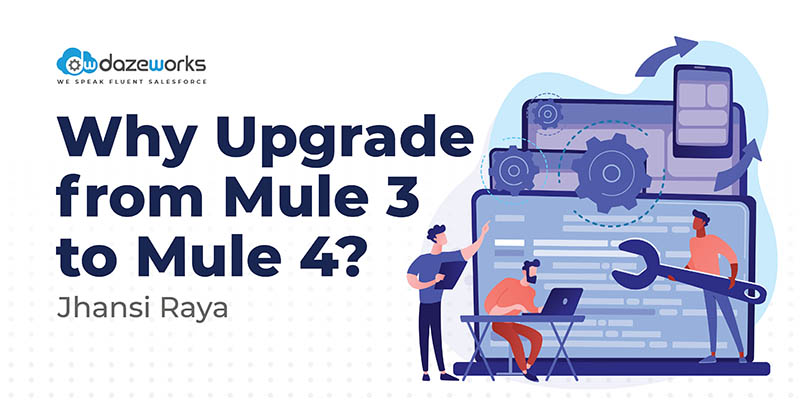
Why Upgrade from Mule 3 to Mule 4?
minutes read
In simple terms, the Mule runtime engine is a lightweight integration engine. You can deploy Mule applications, support domains, publish APIs over the exchange, get the client ID and client secret and apply policies to the API using Mule. The Mule runtime engine is used to deploy Mule applications on-premise and/or on the cloud. One mule runtime can host several mule applications. The Mule runtime engine is a universal block for connectivity. It connects to applications, data, and devices by combining data and application integration across legacy systems, Saas applications, and APIs. Why Upgrade from Mule 3 to Mule 4? Go through and comment your thoughts.
Mule 4 is the latest version of Mule and was released on September 29, 2017.
Upgrading from Mule 3 to Mule 4
We can migrate from Mule 3 to Mule 4 by using MMA (Mule Migration Assistant), an open-source community tool.
While migrating, Mule 3 application inventories into 3 categories
Simple Application:
- Simple apps in Mule 3 can be converted into Mule 4 easily.
- No Custom components: Simple Dataweave transformation and no connector compatibility.
Medium Complexity:
- Application with scope of re-architecture and scope to incorporate new features.
- Medium to high usage of MEL expression and limited usage of batch scope, record variables and watermarks
High Complexity:
- Verify complex applications with multiple flows, connectors and custom code.
- Heavy usage of Dataweave and custom object stores.
After migration through MMA, some of the connectors and syntaxes may not be migrated. A manual migration process needs to be applied in these cases.
For example, in Mule 3 both listener and HTTP request connectors are one connector. Whereas in Mule 4, listener and HTTP requests are two separate connectors.
Mule 3 and 4 Differentiators
Reduced Dev Time: We can develop and deliver applications in Mule 4 easier and faster compared to Mule 3. For example, in the Batch job, Mule 3 has four phases and Mule 4 has three phases. There is no Input phase in Mule 4. The payload of the flow is passed to the batch.
Mule 3 has record variables. These variables, unlike flow variables, exist only during the process phase. In Mule 4, flow variables work effectively enough during batch processing just like record variables removing the need for record variables.
Simple and Intuitive: Mule 4 has high performance and new and intuitive low-code features.
Speed of Delivery: In Mule 4, simplified development languages and faster developer for onboarding.
Actionable Visibility: Mule 4 proactively does error handling and has an easier runtime configuration compared to Mule 3. In Mule 3, exception handling is based on Java whereas Mule 4 error handling is a framework with integrated and configurable error handling mechanisms. Mule 4 has a more seamless processing flow that is better equipped to handle errors.
Future Proof Architecture: Mule 4 has an enhanced self-tuning runtime and is scalable and extensible.
Intentional Self-service: Mule 4 has smoother upgrade paths and centralized collaboration.
This article could solve your confusion on Why Upgrade from Mule 3 to Mule 4? Stay tuned for more posts from our Mulesoft series.
If you would like to know more about Mulesoft implementation, we are here to help. Contact us today to discuss your business aspirations and we’ll take it from there.
